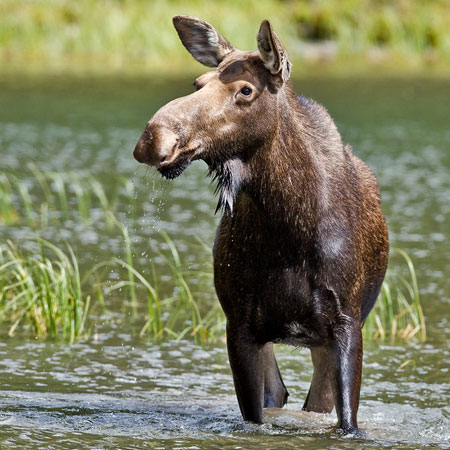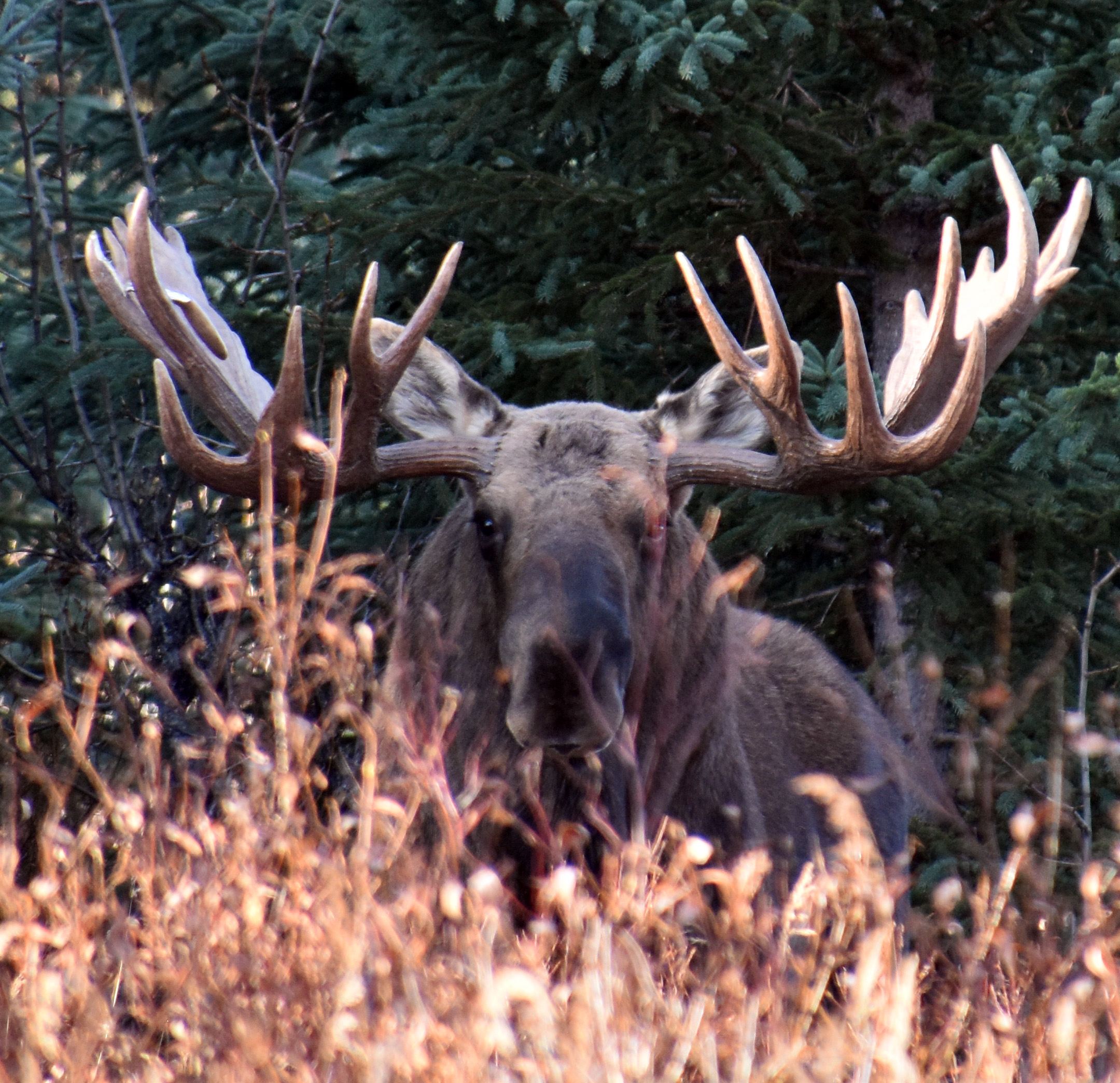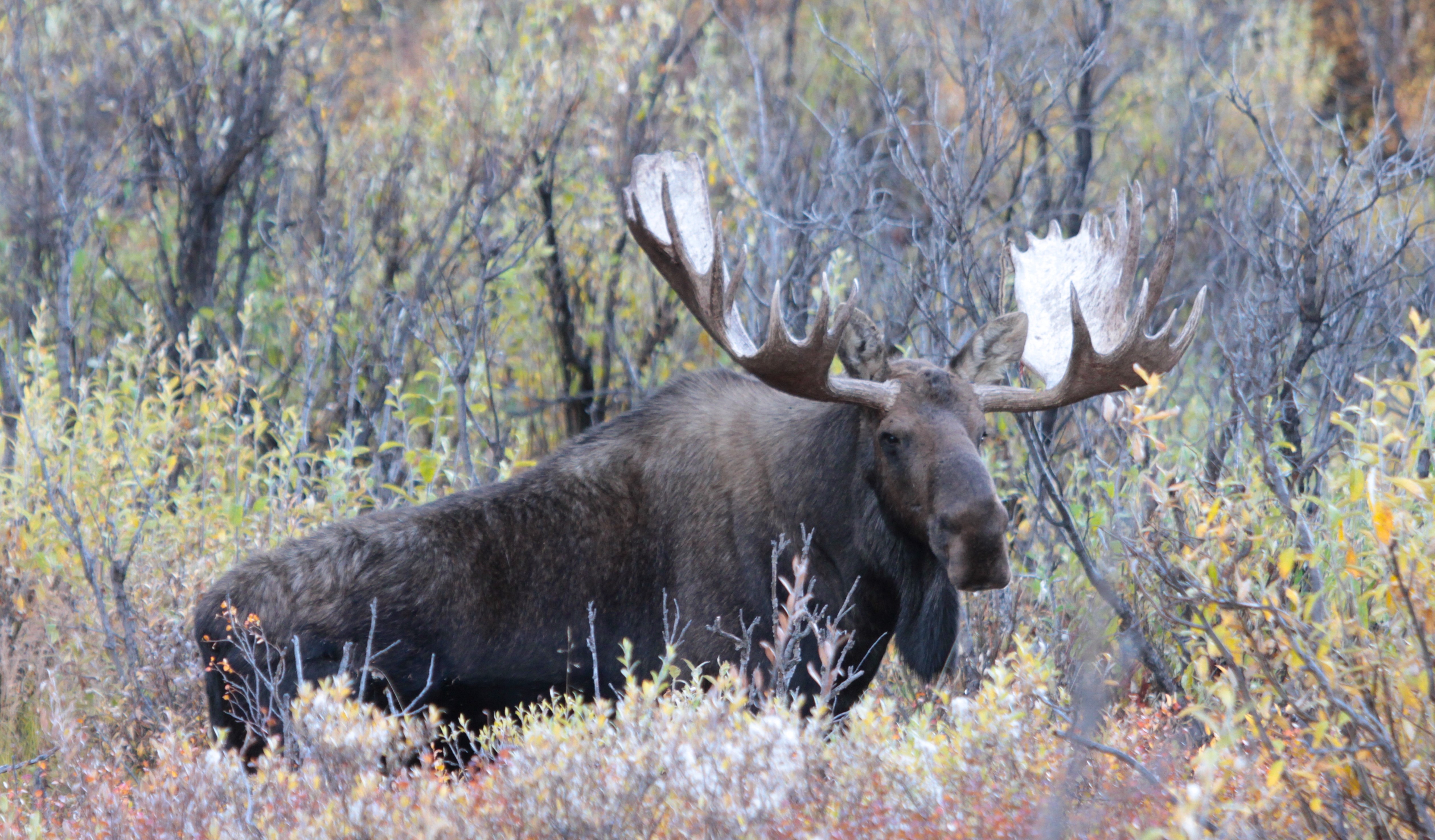Yes, a moose has antlers, which are typically grown by males for mating and defense purposes. Moose antlers are a distinguishing feature of the species, with their size and shape varying among individuals.
Known for their massive size, moose antlers can span up to six feet in width, and they are shed and regrown annually. These impressive appendages play a crucial role in establishing dominance during the mating season, as males engage in fierce battles to win over female moose.
Understanding the significance of moose antlers provides insight into the behavior and biology of these magnificent creatures in their natural habitat.

Credit: naturemappingfoundation.org
Contents
The Moose’s Impressive Antlers
The Moose’s impressive antlers are a striking feature. The male moose, or bull, grows these large, sturdy antlers each year. They are used for attracting mates and establishing dominance during the mating season. The antlers are shed after breeding season and regrown annually.
Moose are known for their impressive antlers that set them apart in the animal kingdom. These majestic creatures bear a magnificent crown of antlers, which play a vital role in their survival and dominance in the wild.The Purpose Of Moose Antlers
Moose antlers are primarily used for display and combat. During the mating season, male moose use their antlers to attract females by displaying their size and strength. The size of the antlers often correlates with the moose’s dominance in the herd.The Growth And Shedding Of Antlers
Moose antlers are fast-growing and are shed annually. In the spring, a new set of antlers begin to grow from the pedicle, covered in velvet – a layer of skin. This velvet is a network of blood vessels that provide nutrients for the antler growth. – Moose shed their antlers after the mating season to conserve energy. – The cycle of antler growth and shedding is crucial for the health and vitality of the moose population. In conclusion, the moose’s antlers are not just a striking feature but a key element in their survival and reproductive success in the wild.
Credit: www.nps.gov
Differentiating Antlers From Horns
Understanding the differences between antlers and horns is crucial when it comes to recognizing a moose’s distinctive features.
Why Moose Antlers Are Not Horns
Moose antlers are bone structures that are shed and regrown annually, while horns are permanent structures made of keratin.
Understanding The Differences
Antlers are branched, shed and regrown annually, whereas horns are permanent and unbranched.
- Antlers are covered in velvet while growing.
- Horns have a bony core and are never shed.
Moose Antlers In The Animal Kingdom
When we think of the animal kingdom, the majestic moose (Alces alces) often springs to mind, renowned for its imposing size and striking antlers. These impressive creatures are an iconic symbol of the northern wilderness, and their antlers play a significant role in both their biology and the ecosystem. Let’s delve into the fascinating world of moose antlers and explore their importance in the animal kingdom.
Comparing Moose Antlers With Other Animal Antlers
Moose antlers stand out in the animal kingdom for their remarkable size and structure. They are the largest and heaviest among the deer family, with a span that can reach up to 6 feet and weighing upwards of 40 pounds. One distinct feature of moose antlers is their flat, palmate shape, unlike the branching antlers of many other deer species. This unique design serves a specific purpose in their mating rituals and ecosystem interactions.
The Significance Of Moose Antlers In Ecology
From an ecological standpoint, moose antlers play crucial roles in various aspects of their natural environment. These antlers are used for competing and establishing dominance within the male moose population during the breeding season. Furthermore, they serve as formidable tools for foraging, helping moose access vegetation that would be challenging to reach otherwise. Their shedding process also contributes valuable nutrients to the forest floor, supporting various plant and animal species.

Credit: www.nps.gov
Cultural And Symbolic Meanings Of Moose Antlers
When it comes to the majestic moose, one cannot overlook the cultural and symbolic meanings attached to their remarkable antlers. Moose antlers have long held significance in various cultures around the world, representing power, strength, and spirituality. In this blog post, we will explore the cultural and symbolic meanings of moose antlers, focusing on their significance in Native American culture, folklore, and modern symbolism.
Moose Antlers In Native American Culture
In Native American culture, moose antlers are regarded as sacred and are often used in rituals and ceremonies. They symbolize wisdom, protection, and the connection between the physical and spiritual realms.
Native American tribes believed that the moose possessed great spiritual power, with their antlers acting as a conduit for this power. Hunters would wear moose antlers during their hunts to bring luck and ensure a successful and abundant harvest.
It is also believed that moose antlers were used as tools of communication with the spirit world. Shamans would wear antlers during sacred ceremonies to bridge the gap between the human and the divine, seeking guidance and wisdom.
Moose Antlers In Folklore And Modern Symbolism
In folklore and modern symbolism, moose antlers have come to represent different concepts. They are often associated with strength, masculinity, and dominance. The impressive size and structure of moose antlers serve as a visual testament to the power and evolutionary adaptations of these majestic creatures.
In some cultures, moose antlers are believed to possess mystical properties, such as warding off negative energy or bringing good luck. They are used as decorative pieces and talismans, adorning homes and personal accessories.
In modern society, moose antlers are frequently used in art, fashion, and design, symbolizing grace, perseverance, and the ability to adapt. Their unique shape and intricate details make them a popular motif in various artistic expressions.
The significance of moose antlers extends beyond their physical attributes. They serve as a reminder of the deep-rooted connection between humans and nature, encouraging us to respect and cherish the world around us.
Overall, moose antlers hold cultural and symbolic meanings that span across different cultures and time periods. Whether it be in Native American rituals or modern symbolism, these antlers symbolize power, spirituality, and the beauty of the natural world.Protection And Preservation Of Moose Antlers
Moose do indeed have antlers, which are essential for protection and as a display during mating rituals. Proper conservation of moose antlers is crucial to preserve their population and the balance within their ecosystem. Protecting moose antlers helps maintain the health and sustainability of these magnificent creatures in the wild.
Challenges In Protecting Moose Antlers
Moose antlers, with their imposing size and intricate structure, have long fascinated people around the world. However, safeguarding these magnificent appendages poses various challenges. One primary difficulty is the illegal poaching of moose for their antlers. Poachers are driven by the high demand for antler-based products, often used in traditional medicines or as decorative items. To combat this threat, authorities must have stringent surveillance measures in place to detect and apprehend wildlife criminals. Additionally, climate change has resulted in habitat loss and reduced food availability for moose, affecting their overall health and the growth of their antlers. As a result, it becomes imperative to address these challenges to protect and preserve the precious antlers of moose.Conservation Efforts And Policies For Moose Antlers
Efforts to protect and preserve moose antlers have gained momentum in recent years. Governments and wildlife organizations worldwide have implemented various conservation programs and policies aimed at sustaining healthy moose populations. These initiatives focus on creating protected areas that serve as safe havens for moose, where hunting and habitat destruction are strictly regulated. Moreover, responsible hunting practices and strict bag limits ensure sustainable harvests while minimizing the negative impact on the moose population. Education and awareness campaigns play a vital role in promoting the conservation of moose antlers, as they help foster an understanding of the importance of preserving these majestic creatures and their unique attributes.| Conservation Efforts and Policies for Moose Antlers: |
|---|
| – Creating protected areas |
| – Regulating hunting and bag limits |
| – Implementing strict surveillance measures to combat poaching |
| – Conducting research on moose habitat and antler growth to inform conservation strategies |
| – Promoting education and awareness campaigns about the importance of preserving moose antlers |
Frequently Asked Questions Of Does A Moose Have Antlers
Does A Moose Have Antlers?
Yes, a moose indeed has antlers. In fact, they are famous for their magnificent antlers, which are large and complex structures made of bone and covered in velvet. Antlers are shed and regrown each year, and are primarily used by male moose during the mating season to attract females and establish dominance.
Conclusion
Moose do indeed have antlers, which are mainly used during mating season and shedding. Understanding the function and growth of moose antlers provides valuable insight into these majestic creatures. Their impressive antlers are not only a defining feature but also serve as a crucial part of their survival and reproduction.



